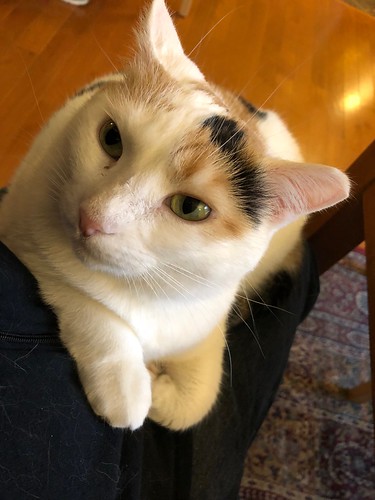Colonies differ slightly in colour when cultivated for h on agar plates containing higher concentrations of ampicillin (gml).When we streaked compact colonies onto fresh plates without antibiotics, they formed uniform huge colonies immediately after overnight incubation, indicating the tiny colony morphotype was not caused by a genetic mutation. Additional importantly, little colonies formed both major and tiny colonies when recultivated inside the presence of ampicillin. Nonetheless, within the presence of ampicillin,cells from significant colonies formed once more a uniform colony at and h immediately after Indirubin-3-monoxime site transfer to fresh agar plates containing ampicillin. This reversible variation in colony morphology was also observed for other strains for example S. maltophilia CF, an isolate in the respiratory tract of a cystic fibrosis patient, and S. maltophilia DSM isolated in the human oropharyngeal region (Table). Collectively with these findings, we observed that cells grown in the presence of ampicillin formed more regularly long bacterial chains (Figure). In addition, SMKa cells from each colony morphotypes showed the formation of outer membrane vesicles (OMVs). Nevertheless, this feature was a lot far more pronounced within the presence of ampicillin (Figures B) in comparison to cells grown in the absence of the antibiotic that showed only incredibly few or no vesicles (Figure A). Intriguingly, the size from the OMVs varied considerably, ranging PubMed ID:https://www.ncbi.nlm.nih.gov/pubmed/27416664 from less than nm as much as nm in diameter in some SMKa cells, which was twice the size as these reported for other Gramnegative bacteria (Beveridge,). Most likely, these vesicles are packed with blaL and blaL active enzymes (Devos et al). These initial information suggested that the observed colony morphotypes resulted either from gene expression variations in the cellular level inside isogenic populations or from heterogeneous expression of resistance genes at a single cell level. Given that colony morphotypes had been reversible, they probably have been not a outcome of permanent mutations such as SNPs. To test this hypothesis, we sequenced DNA from person colonies with diverse morphotypes making use of NGS technologies (Supplementary Figure S). General, we analyzed the genomes of little, significant, and uniform colonies with an typical .fold coverage. Compared using the published SMKa genome sequence, we identified SNPs per colony, as much as seven deletions and 4 insertions within all colonies (Supplementary Table S). Most remarkably, none of these have been identified within the recognized resistome of SMKa, additional supporting the notion that the colony morphotypes were not a main result of  genetic alterations. A more detailed genome analysis identified SNPs or smaller deletions in genes and ORFs, and none of these appeared to become linked to a gene that’s necessary for growth (Supplementary Table S). Only among the observed SNPs might be linked to lactam remedy, namely smlt, a gene which codes to get a putative UDPNacetylmuramate:LalanylgammaD glutamylmesodiaminopimelate ligase. This enzyme is most likely involved in recycling of cell wall precursors throughout bacterial cell wall synthesis but isn’t important for development (MenginLecreulx et al). Two other regions inside the SMKa genome contained high densities of SNPs and GSK6853 indels. These loci are assigned to genes coding for the hypothetical protein SmltB along with a twocomponent regulatory systemsensor histidine kinase (Smlt). The smltB and smlt genes carried nonsynonymous mutations at seven or nine base positions, respectively (Supplementary Table S). The product of smlt features a leng.Colonies differ slightly in color when cultivated for h on agar plates containing high concentrations of ampicillin (gml).When we streaked modest colonies onto fresh plates with out antibiotics, they formed uniform big colonies just after overnight incubation, indicating the compact colony morphotype was not brought on by a genetic mutation. Additional importantly, compact colonies formed both major and tiny colonies when recultivated inside the presence of ampicillin. Nevertheless, within the presence of ampicillin,cells from large colonies formed again a uniform colony at and h after transfer to fresh agar plates containing ampicillin. This reversible variation in colony morphology was also observed for other strains including S. maltophilia
genetic alterations. A more detailed genome analysis identified SNPs or smaller deletions in genes and ORFs, and none of these appeared to become linked to a gene that’s necessary for growth (Supplementary Table S). Only among the observed SNPs might be linked to lactam remedy, namely smlt, a gene which codes to get a putative UDPNacetylmuramate:LalanylgammaD glutamylmesodiaminopimelate ligase. This enzyme is most likely involved in recycling of cell wall precursors throughout bacterial cell wall synthesis but isn’t important for development (MenginLecreulx et al). Two other regions inside the SMKa genome contained high densities of SNPs and GSK6853 indels. These loci are assigned to genes coding for the hypothetical protein SmltB along with a twocomponent regulatory systemsensor histidine kinase (Smlt). The smltB and smlt genes carried nonsynonymous mutations at seven or nine base positions, respectively (Supplementary Table S). The product of smlt features a leng.Colonies differ slightly in color when cultivated for h on agar plates containing high concentrations of ampicillin (gml).When we streaked modest colonies onto fresh plates with out antibiotics, they formed uniform big colonies just after overnight incubation, indicating the compact colony morphotype was not brought on by a genetic mutation. Additional importantly, compact colonies formed both major and tiny colonies when recultivated inside the presence of ampicillin. Nevertheless, within the presence of ampicillin,cells from large colonies formed again a uniform colony at and h after transfer to fresh agar plates containing ampicillin. This reversible variation in colony morphology was also observed for other strains including S. maltophilia  CF, an isolate from the respiratory tract of a cystic fibrosis patient, and S. maltophilia DSM isolated in the human oropharyngeal region (Table). Collectively with these findings, we observed that cells grown inside the presence of ampicillin formed additional regularly long bacterial chains (Figure). Moreover, SMKa cells from each colony morphotypes showed the formation of outer membrane vesicles (OMVs). On the other hand, this function was significantly more pronounced within the presence of ampicillin (Figures B) in comparison to cells grown inside the absence on the antibiotic that showed only quite few or no vesicles (Figure A). Intriguingly, the size of the OMVs varied significantly, ranging PubMed ID:https://www.ncbi.nlm.nih.gov/pubmed/27416664 from much less than nm up to nm in diameter in some SMKa cells, which was twice the size as those reported for other Gramnegative bacteria (Beveridge,). Most likely, these vesicles are packed with blaL and blaL active enzymes (Devos et al). These initial information suggested that the observed colony morphotypes resulted either from gene expression differences at the cellular level inside isogenic populations or from heterogeneous expression of resistance genes at a single cell level. Given that colony morphotypes were reversible, they most likely had been not a outcome of permanent mutations including SNPs. To test this hypothesis, we sequenced DNA from person colonies with diverse morphotypes making use of NGS technologies (Supplementary Figure S). All round, we analyzed the genomes of modest, huge, and uniform colonies with an typical .fold coverage. Compared with all the published SMKa genome sequence, we identified SNPs per colony, up to seven deletions and 4 insertions inside all colonies (Supplementary Table S). Most remarkably, none of those had been identified within the known resistome of SMKa, additional supporting the notion that the colony morphotypes have been not a main outcome of genetic alterations. A more detailed genome analysis identified SNPs or smaller deletions in genes and ORFs, and none of these appeared to become linked to a gene that is certainly vital for growth (Supplementary Table S). Only among the observed SNPs may well be linked to lactam treatment, namely smlt, a gene which codes to get a putative UDPNacetylmuramate:LalanylgammaD glutamylmesodiaminopimelate ligase. This enzyme is most likely involved in recycling of cell wall precursors during bacterial cell wall synthesis but is not important for growth (MenginLecreulx et al). Two other regions within the SMKa genome contained high densities of SNPs and indels. These loci are assigned to genes coding for the hypothetical protein SmltB and a twocomponent regulatory systemsensor histidine kinase (Smlt). The smltB and smlt genes carried nonsynonymous mutations at seven or nine base positions, respectively (Supplementary Table S). The product of smlt features a leng.
CF, an isolate from the respiratory tract of a cystic fibrosis patient, and S. maltophilia DSM isolated in the human oropharyngeal region (Table). Collectively with these findings, we observed that cells grown inside the presence of ampicillin formed additional regularly long bacterial chains (Figure). Moreover, SMKa cells from each colony morphotypes showed the formation of outer membrane vesicles (OMVs). On the other hand, this function was significantly more pronounced within the presence of ampicillin (Figures B) in comparison to cells grown inside the absence on the antibiotic that showed only quite few or no vesicles (Figure A). Intriguingly, the size of the OMVs varied significantly, ranging PubMed ID:https://www.ncbi.nlm.nih.gov/pubmed/27416664 from much less than nm up to nm in diameter in some SMKa cells, which was twice the size as those reported for other Gramnegative bacteria (Beveridge,). Most likely, these vesicles are packed with blaL and blaL active enzymes (Devos et al). These initial information suggested that the observed colony morphotypes resulted either from gene expression differences at the cellular level inside isogenic populations or from heterogeneous expression of resistance genes at a single cell level. Given that colony morphotypes were reversible, they most likely had been not a outcome of permanent mutations including SNPs. To test this hypothesis, we sequenced DNA from person colonies with diverse morphotypes making use of NGS technologies (Supplementary Figure S). All round, we analyzed the genomes of modest, huge, and uniform colonies with an typical .fold coverage. Compared with all the published SMKa genome sequence, we identified SNPs per colony, up to seven deletions and 4 insertions inside all colonies (Supplementary Table S). Most remarkably, none of those had been identified within the known resistome of SMKa, additional supporting the notion that the colony morphotypes have been not a main outcome of genetic alterations. A more detailed genome analysis identified SNPs or smaller deletions in genes and ORFs, and none of these appeared to become linked to a gene that is certainly vital for growth (Supplementary Table S). Only among the observed SNPs may well be linked to lactam treatment, namely smlt, a gene which codes to get a putative UDPNacetylmuramate:LalanylgammaD glutamylmesodiaminopimelate ligase. This enzyme is most likely involved in recycling of cell wall precursors during bacterial cell wall synthesis but is not important for growth (MenginLecreulx et al). Two other regions within the SMKa genome contained high densities of SNPs and indels. These loci are assigned to genes coding for the hypothetical protein SmltB and a twocomponent regulatory systemsensor histidine kinase (Smlt). The smltB and smlt genes carried nonsynonymous mutations at seven or nine base positions, respectively (Supplementary Table S). The product of smlt features a leng.
